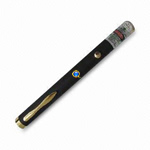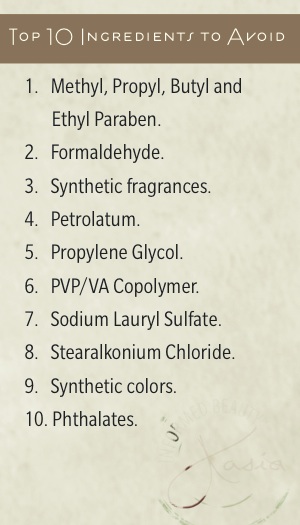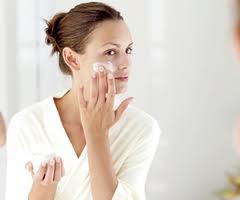Reference: By Susan Freinkel on
April 16, 201In a study published last year in the journal Environmental Health Perspectives, researchers put five San Francisco families on a three-day diet of food that hadn’t been in contact with plastic. When they compared urine samples before and after the diet, the scientists were stunned to see what a difference a few days could make: The participants’ levels of bisphenol A (BPA), which is used to harden polycarbonate plastic, plunged – by two-thirds, on average – while those of the phthalate DEHP, which imparts flexibility to plastics, dropped by more than half.The findings seemed to confirm what many experts suspected: Plastic food packaging is a major source of these potentially harmful chemicals, which most Americans harbor in their bodies. Other studies have shown phthalates (pronounced THAL-ates) passing into food from processing equipment and food-prep gloves, gaskets and seals on non-plastic containers, inks used on labels – which can permeate packaging – and even the plastic film used in agriculture.
The government has long known that tiny amounts of chemicals used to make plastics can sometimes migrate into food. The Food and Drug Administration regulates these migrants as “indirect food additives” and has approved more than 3,000 such chemicals for use in food-contact applications since 1958. It judges safety based on models that estimate how much of a given substance might end up on someone’s dinner plate. If the concentration is low enough (and when these substances occur in food, it is almost always in trace amounts), further safety testing isn’t required.
Meanwhile, however, scientists are beginning to piece together data about the ubiquity of chemicals in the food supply and the cumulative impact of chemicals at minute doses. What they’re finding has some health advocates worried.
This is “a huge issue, and no [regulator] is paying attention,” says Janet Nudelman, program and policy director at the Breast Cancer Fund, a nonprofit that focuses on the environmental causes of the disease. “It doesn’t make sense to regulate the safety of food and then put the food in an unsafe package.”
A complicated issue
How common are these chemicals? Researchers have found traces of styrene, a likely carcinogen, in instant noodles sold in polystyrene cups. They’ve detected nonylphenol – an estrogen-mimicking chemical produced by the breakdown of antioxidants used in plastics – in apple juice and baby formula. They’ve found traces of other hormone-disrupting chemicals in various foods: fire retardants in butter, Teflon components in microwave popcorn, and dibutyltin – a heat stabilizer for polyvinyl chloride – in beer, margarine, mayonnaise, processed cheese and wine. They’ve found unidentified estrogenic substances leaching from plastic water bottles.
Is It Possible to Build a Safer Plastic Package?A growing number of companies are using “green chemistry” to create new polymers and additives without known hazards. But Mike Usey, CEO of a small Texas start-up called Plastipure, says there’s a simpler solution: Find the existing plastic resins and additives that don’t interfere with natural hormones. There are plenty out there, he says, but identifying them is complicated because one type of plastic can be formulated in many different ways, making some brands or grades safer than others.Plastipure was started in 2000 by George Bittner, a University of Texas neurobiologist who developed analytic methods to systematically recognize synthetic chemicals that are not estrogenically active, or “EA-free,” in the company parlance. They don’t, in other words, mimic estrogens naturally produced by the body. “We’ve taken thousands and thousands of tests on materials and chemicals and additives, so we know now what is commercially used that is EA-free and what is not,” says Usey. Their first product, released in 2008, was a water bottle they proclaimed to be entirely EA-free.
In 2011, Plastipure scientists published a study in which they tested some 500 plastic packages and products. Their results showed 92 percent were estrogenically active, even products that claimed to be BPA-free. Although the research was “obviously commercially motivated, I think they raised a very legitimate issue,” says Bill Pease, a toxicologist for GoodGuide, a group that rates the health and environmental safety of consumer products. In 2011, the National Science Foundation awarded Plastipure a $650,000 grant to further develop its EA-free technology.
But Usey says while consumers may like the idea of an EA-free plastic, it’s been a tough sell, even to well-meaning food companies. Despite interest, no one wants to be the first to adopt a new type of package. “Everybody wants … to be second,” he says with a sigh of frustration. “The companies’ first concern is liability – if we put something out that we say is safer, are we admitting what we did before is unsafe?”
Finding out which chemicals might have seeped into your groceries is nearly impossible, given the limited information collected and disclosed by regulators, the scientific challenges of this research and the secrecy of the food and packaging industries, which view their components as proprietary information. Although scientists are learning more about the pathways of these substances – and their potential effect on health – there is an enormous debate among scientists, policymakers and industry experts about what levels are safe.
The issue is complicated by questions about cumulative exposure, as Americans come into contact with multiple chemical-leaching products every day. Those questions are still unresolved, says Linda Birnbaum, director of the National Institute of Environmental Health Science, part of the National Institutes of Health. Still, she said, “we do know that if chemicals act by the same pathway that they will act in an additive manner” – meaning that a variety of chemicals ingested separately in very small doses may act on certain organ systems or tissues as if they were a single cumulative dose.
The American Chemistry Council says there is no cause for concern. “All materials intended for contact with food must meet stringent FDA safety requirements before they are allowed on the market,” says spokeswoman Kathryn Murray St. John. “Scientific experts review the full weight of all the evidence when making such safety determinations.”
Hard to measure
When it comes to food packaging and processing, among the most frequently studied agents are phthalates, a family of chemicals used in lubricants and solvents and to make polyvinyl chloride pliable. (PVC is used throughout the food processing and packaging industries for such things as tubing, conveyor belts, food-prep gloves and packaging.)
Because they are not chemically bonded to the plastic, phthalates can escape fairly easily. Some appear to do little harm, but animal studies and human epidemiological studies suggest that one phthalate, called DEHP, can interfere with testosterone during development. Studies have associated low-dose exposure to the chemical with male reproductive disorders, thyroid dysfunction and subtle behavioral changes.
But measuring the amount of phthalates that end up in food is notoriously difficult. Because these chemicals are ubiquitous, they contaminate equipment in even purportedly sterile labs.
In the first study of its kind in the United States, Kurunthachalam Kannan, a chemist at the New York State Department of Health, and Arnold Schecter, an environmental health specialist at the University of Texas Health Science Center, have devised a protocol to analyze 72 different grocery items for phthalates. Schecter won’t reveal the results before they’re published – later this year, he hopes – except to say he found DEHP in many of the samples tested.
Perhaps the most controversial chemical in food packaging is BPA, which is chiefly found in the epoxy lining of food cans and which mimics natural estrogen in the body. Many researchers have correlated low-dose exposures to BPA with later problems such as breast cancer, heart disease and diabetes. But other studies have found no association. Canada declared BPA toxic in October 2010, but industry and regulators in the United States and in other countries maintain that health concerns are overblown.
Last month, the FDA denied a petition to ban the chemical, saying in a statement that while “some studies have raised questions as to whether BPA may be associated with a variety of health effects, there remain serious questions about these studies, particularly as they relate to humans and the public health impact.”
The fact that a plastic bottle or bag or tub can leach chemicals doesn’t necessarily make it a hazard to human health. Indeed, to the FDA, the key issue isn’t whether a chemical can migrate into food, but how much of that substance consumers might ingest.
If simulations and modeling studies predict that a serving contains less than 0.5 parts of a suspect chemical per billion – equivalent to half a grain of salt in an Olympic-size swimming pool – FDA’s guidance does not call for any further safety testing. On the premise that the dose makes the poison, the agency has approved a number of potentially hazardous substances for food-contact uses, including phosphoric acid, vinyl chloride and formaldehyde.
Emerging science
But critics now question that logic. For one thing, it doesn’t take into account the emerging science on chemicals that interfere with natural hormones and might be harmful at much lower doses than has been thought to cause health problems. Animal studies have found that exposing fetuses to doses of BPA below the FDA’s safety threshold can affect breast and prostate cells, brain structure and chemistry, and even later behavior.
According to Jane Muncke, a Swiss researcher who has reviewed decades’ worth of literature on chemicals used in packaging, at least 50 compounds with known or suspected endocrine-disrupting activity have been approved as food-contact materials.
“Some of those chemicals were approved back in the 1960s, and I think we’ve learned a few things about health since then,” says Thomas Neltner, director of a Pew Charitable Trusts project that examines how the FDA regulates food additives. “Unless someone in the FDA goes back and looks at those decisions in light of the scientific developments in the past 30 years, it’s pretty hard to say what is and isn’t safe in the food supply.”
FDA spokesman Doug Karas in an e-mail interview said that before approving new food-contact materials, the agency investigates the potential for hormonal disruption “when estimated exposures suggest a need.” But FDA officials don’t think the data on low-dose exposures prove a need to revise that 0.5 ppb exposure threshold or reassess substances that have already been approved.
Another criticism is that the FDA doesn’t consider cumulative dietary exposure. “The risk assessments have been done only one chemical at a time, and yet that’s not how we eat,” Schecter notes. (Karas counters that “there currently are no good methods to assess these types of effects.”)
“The whole system is stacked in favor of the food and packaging companies and against the protecting of public health,” Nudelman, of the Breast Cancer Fund, says. She and others are concerned that the FDA relies on manufacturers to provide migration data and preliminary safety information, and that the agency protects its findings as confidential. So consumers have no way of knowing what chemicals, and in what amounts, they are putting on the table every day.
It’s not just consumers who lack information. The companies that make the food in the packages can face the same black box. Brand owners often do not know the complete chemical contents of their packaging, which typically comes through a long line of suppliers.
What’s more, they might have trouble getting answers if they ask. Nancy Hirshberg, vice president of natural resources at Stonyfield Farm, describes how in 2010, the organic yogurt producer decided to launch a multipack yogurt for children in a container made of PLA, a corn-based plastic. Because children are particularly vulnerable to the effects of hormone disrupters and other chemicals, the company wanted to ensure that no harmful chemicals would migrate into the food.
Stonyfield was able to figure out all but 3 percent of the ingredients in the new packaging. But when asked to identify that 3 percent, the plastic supplier balked at revealing what it considered a trade secret. To break the impasse, Stonyfield hired a consultant who put together a list of 2,600 chemicals that the dairy didn’t want in its packaging. The supplier confirmed that none were in the yogurt cups, and a third party verified the information.
2









